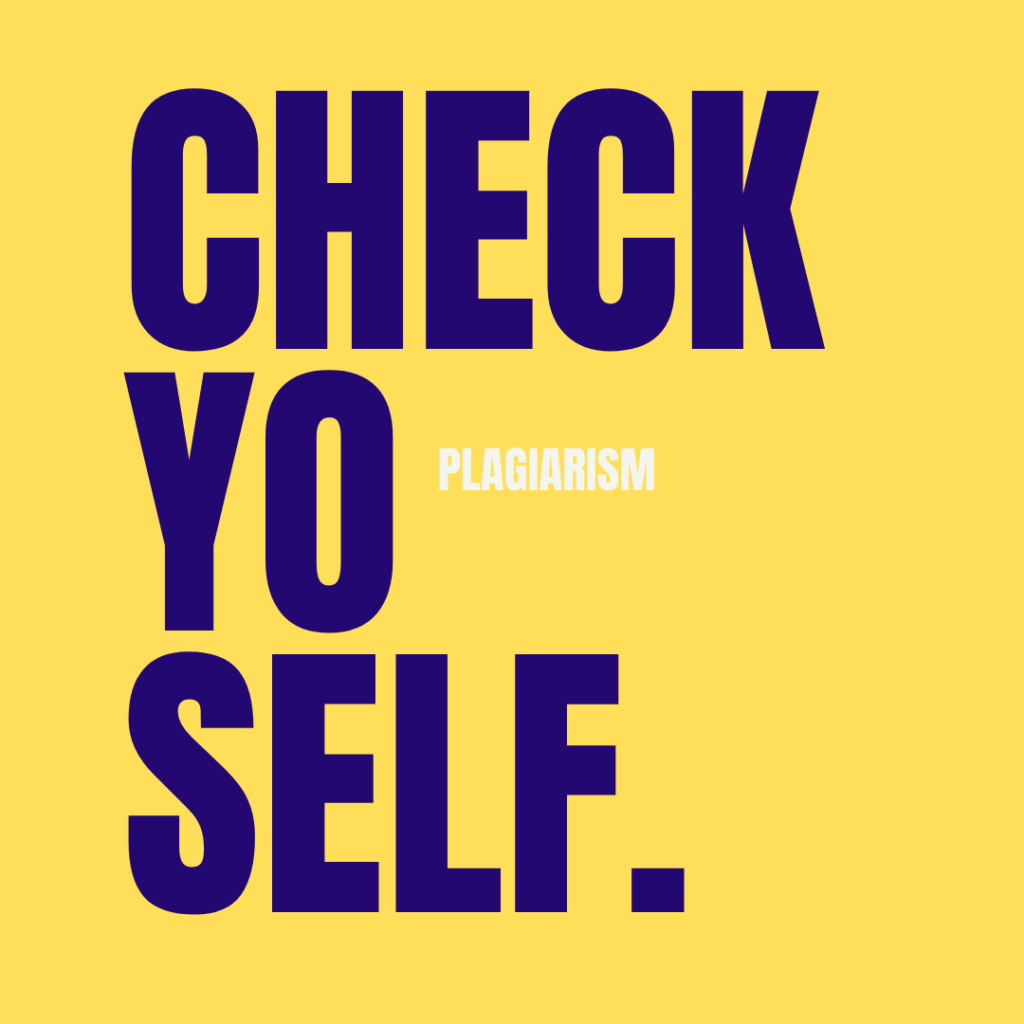How to Check it and Fix it
This is a REAL problem these days – In the digital world, content is the king. Businesses, academic institutions, bloggers, and marketers all rely heavily on unique and high-quality content to build their brand identity, provide valuable information, and engage their audiences. However, with the increasing demand for content, the risk of plagiarism has grown significantly. Plagiarism, in simple terms, refers to the act of copying or stealing someone else’s work and presenting it as one’s own. Whether intentional or accidental, it’s an unethical practice that can damage reputations, harm search engine rankings, and even result in legal consequences. As content creators, marketers, or students, it is essential to understand what plagiarism is, how to detect it, and how to avoid it to ensure the integrity and originality of your work.
Plagiarism has evolved in parallel with the digital age. With the vast amount of information available on the internet, it’s easy for people to copy text, images, or ideas without giving proper credit to the original creator. But what some may not realize is that plagiarism is not only about copying word-for-word; it also includes paraphrasing or restructuring someone else’s work without acknowledging the source. In the age of search engines, content originality is not only crucial for credibility but also for visibility. Search engines like Google place a strong emphasis on fresh, unique content. Duplicate content is flagged by algorithms, which can lead to lower search engine rankings, reducing the chances of your content being discovered by potential readers or customers.
Table of Contents
What is Plagiarism in Content, How to Check it, and How to Overcome it
The Consequences of Plagiarism..
Tools and Technologies to Combat Plagiarism..
The Role of Education in Preventing Plagiarism..
But how do you determine if content is plagiarized? Thanks to advancements in technology, there are now many tools that can check for duplicate content. These tools analyze the text and compare it to millions of other pieces of content available online to identify any similarities. While these tools are powerful, they aren’t infallible. Understanding how plagiarism works and being proactive in ensuring originality is key to maintaining ethical standards in content creation. In this article, we will delve deep into the nature of plagiarism in content, how to detect it, and explore effective strategies to avoid it altogether.
What is Plagiarism?
Plagiarism, at its core, is the act of using someone else’s intellectual property without permission or acknowledgment. This intellectual property could be anything from written text, images, music, or even ideas. In content creation, plagiarism often manifests as copying chunks of text from another source, using someone else’s ideas without proper credit, or paraphrasing another person’s work too closely without citation.
There are several types of plagiarism:
- Direct Plagiarism: This occurs when someone copies another author’s work word-for-word without any acknowledgment. Direct plagiarism is the most blatant form and is often easy to detect.
- Self-Plagiarism: While it may seem strange, it’s possible to plagiarize yourself. Self-plagiarism happens when an author republishes their own previous work or significant portions of it without making substantial changes or acknowledging that it’s been used before.
- Mosaic Plagiarism (Patchwriting): This type of plagiarism involves copying phrases or ideas from multiple sources and mixing them together, often slightly rephrasing them without citing the original sources. Mosaic plagiarism is one of the trickier forms to detect, as it may seem original at first glance.
- Accidental Plagiarism: Sometimes, plagiarism is unintentional. Writers might forget to cite a source or incorrectly paraphrase someone else’s ideas. Even though it’s accidental, it’s still considered plagiarism and can lead to consequences.
iZibra Sarees for Women
Wear Cotton Silk Banarasi Sari Kanjivaram Soft Pure Paithani Wedding Original Kanchipuram Pattu Sadi with Blouse Piece
Discount -50% ₹999

The Consequences of Plagiarism
The consequences of plagiarism can be severe, depending on the context. In academic settings, plagiarism can result in failed grades, suspension, or even expulsion. In the professional world, plagiarism can damage a company’s reputation, lead to lawsuits, or cause a drop in search engine rankings. Beyond legal and reputational risks, plagiarism undermines the integrity of the writer and diminishes the value of the work.
For businesses and content creators, the stakes are even higher. Plagiarized content can result in:
- Search Engine Penalties: Google and other search engines penalize websites that publish duplicate content. These penalties can include lower search rankings, removal from search results, or diminished traffic.
- Loss of Trust: Readers and customers expect original content. If they discover that a company or individual is plagiarizing, they may lose trust in the brand.
- Legal Repercussions: Copyright infringement is a serious offense that can lead to lawsuits and financial penalties.
How to Check for Plagiarism
Detecting plagiarism has become easier with the rise of sophisticated tools that can scan and compare content against millions of sources. These tools are essential for ensuring the originality of your work and preventing unintentional plagiarism. Here’s a breakdown of some of the most effective plagiarism detection methods:
1. Plagiarism Checkers
Plagiarism detection tools analyze text and compare it to a database of published works, websites, and other digital content. If there’s a match, the tool will flag the content as potentially plagiarized. Some of the most popular plagiarism checkers include:

- Turnitin: Widely used in academic settings, Turnitin is known for its comprehensive database, which includes student papers, academic journals, and web content.
- Grammarly: Primarily a grammar and writing tool, Grammarly also includes a plagiarism checker that scans text for duplicate content across billions of web pages.
- Copyscape: This tool is popular among bloggers and website owners. Copyscape checks for duplicate content online and helps ensure that content is original.
- Quetext: A user-friendly tool that offers deep search capabilities, Quetext can identify potential plagiarism in a matter of seconds.
2. Manual Checking
While tools are efficient, it’s also a good idea to manually check for plagiarism by comparing your content against the original source. This is particularly important when you are paraphrasing. Ensure that your writing is sufficiently different from the source material and that you’ve added your own unique insights or ideas.
3. Google Search
In some cases, a simple Google search can help identify plagiarized content. Copy a phrase or sentence from your text and paste it into Google’s search bar. If the content is plagiarized, Google will likely show you the original source.
How to Overcome Plagiarism
Avoiding plagiarism is crucial for maintaining the integrity and value of your work. Here are some effective strategies to help you overcome plagiarism and create original content:
1. Paraphrase Effectively
One of the best ways to avoid plagiarism is to paraphrase effectively. When you paraphrase, you reword the original text in your own words while maintaining the original meaning. However, paraphrasing requires more than just swapping a few words for synonyms. It involves restructuring the text and introducing your unique voice or perspective.
To paraphrase effectively:
- Read the original content carefully until you fully understand it.
- Set it aside and rewrite the key ideas in your own words.
- Compare your version with the original to ensure that you haven’t unintentionally copied phrases or ideas too closely.
2. Use Proper Citations
Properly citing your sources is a fundamental part of ethical writing. Whether you’re quoting directly or paraphrasing someone else’s ideas, you must provide the correct attribution to the original author. There are several citation styles, such as APA, MLA, and Chicago, that dictate how to format your citations. Choose the appropriate one based on your industry or field of study.
In content marketing or blogging, hyperlinking to the original source can be an effective way to cite and acknowledge others’ work.
3. Quote Accurately
If you need to use someone else’s words verbatim, be sure to enclose them in quotation marks and provide proper attribution. This shows that you’re borrowing someone else’s words intentionally and gives credit where it’s due. When quoting, it’s important to use the exact wording of the original text and avoid altering it in any way.
4. Use Plagiarism Detection Tools
Even if you believe your content is original, it’s still wise to run it through a plagiarism detection tool before publishing. These tools can catch any accidental plagiarism or flag areas where your content is too similar to existing works. This step is especially important if you’re working on large-scale content projects or academic papers.

5. Create Original Ideas
The best way to avoid plagiarism is to generate your own ideas. When you’re deeply engaged with a subject and offer new insights, you naturally produce original content. Original ideas don’t have to be entirely revolutionary; they can be fresh takes or new perspectives on existing topics. Conduct thorough research, think critically about the material, and contribute your voice to the conversation.
6. Keep Track of Your Sources
When conducting research, it’s easy to lose track of where your information is coming from, which increases the risk of accidental plagiarism. Maintain organized notes and keep track of all the sources you’ve consulted. This will help you attribute any borrowed information correctly and avoid unintentional plagiarism.
Tools and Technologies to Combat Plagiarism
In addition to the aforementioned plagiarism detection tools, there are various technologies designed to combat plagiarism effectively. Some advanced tools and systems offer sophisticated features that go beyond basic plagiarism detection:
1. Natural Language Processing (NLP)
NLP-based plagiarism detection tools are capable of understanding context and meaning in text. These systems can detect paraphrased content and flag instances where the original meaning of a piece of work has been copied without proper citation.
2. AI-Powered Tools
Artificial Intelligence (AI) has transformed the plagiarism detection landscape by improving the ability to detect subtle instances of plagiarism, such as mosaic plagiarism and improper paraphrasing. AI-powered tools continuously evolve and can even assess the structure and style of a document to identify potential duplication.
3. Blockchain for Digital Content Tracking
Blockchain technology is emerging as a powerful tool for tracking ownership and copyright of digital content. Blockchain can create immutable records of original content, ensuring that ownership is transparent and indisputable. This technology could revolutionize how content is protected from plagiarism in the future.
The Role of Education in Preventing Plagiarism
Education is a key factor in preventing plagiarism. Many individuals, particularly students, may not fully understand what constitutes plagiarism or how to avoid it. Educating content creators, students, and employees about the importance of originality and the ethical implications of plagiarism can reduce instances of both intentional and unintentional plagiarism.
Workshops, online courses, and tutorials on proper citation methods, effective paraphrasing, and ethical writing practices can equip individuals with the skills they need to avoid plagiarism. Additionally, companies and educational institutions should have clear policies in place regarding plagiarism and the consequences of violating those policies.
Conclusion
Plagiarism is a significant issue in the realm of content creation, academic writing, and professional work. Whether intentional or accidental, it can have damaging consequences for individuals and businesses alike. Understanding the different forms of plagiarism, the tools available to detect it, and the strategies for avoiding it is essential for anyone involved in creating content.
By paraphrasing effectively, using proper citations, and leveraging technology like plagiarism detection tools, you can ensure that your work remains original and ethical. Education and awareness also play a crucial role in preventing plagiarism, helping writers and students navigate the complexities of content creation without crossing ethical boundaries.
Ultimately, the key to overcoming plagiarism lies in a commitment to producing original, high-quality content that adds value to the conversation. By doing so, you not only protect your reputation but also contribute to a more honest and innovative content landscape.
Curated for you





